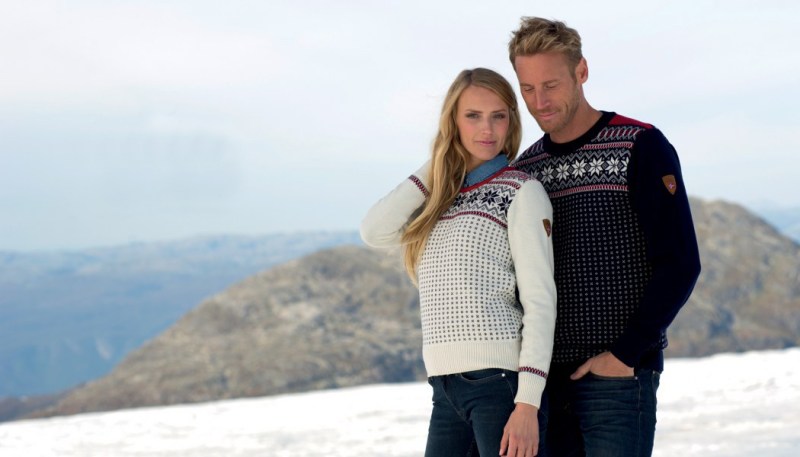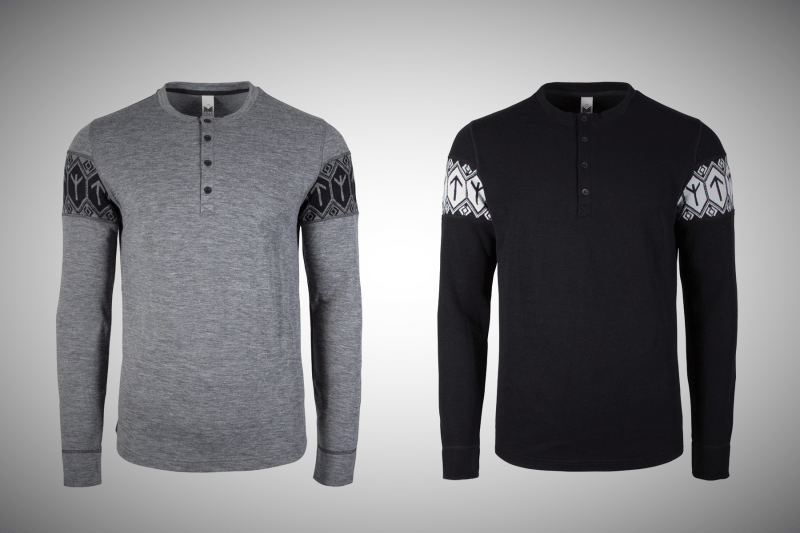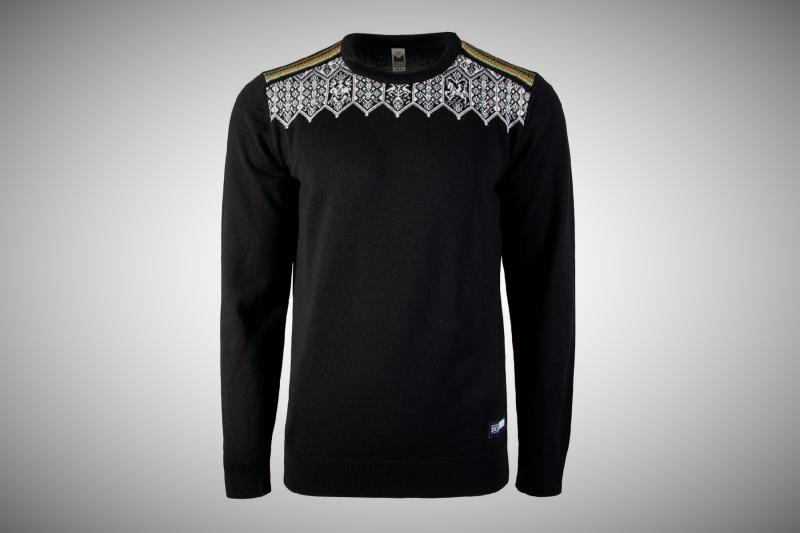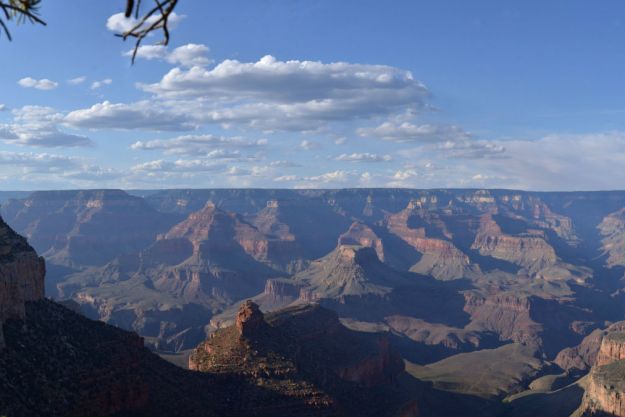
Related: What To Dry Clean and When: A Guy’s Guide To Getting Clean
The textile industry in Dale, Norway got it’s start when business man Peder Jebsen built a modern textile factory alongside natural waterfalls for hydro-power, and a massive supply of high quality Norwegian wool. Since 1879 Dale’s timeless designs and attention to quality have been hallmarks of each sweater’s longevity. Some of their latest collections take that heritage into the twenty-first century.
The Viking Collection

Designed for the Norwegian Alpine Ski Team, The Viking collection features Viking Runes symbolizing protection and victory knitted into each design. We’ve been wearing the Henley style Basic Sweater ($239) spring skiing in Squaw Valley, and are impressed with the incredibly soft merino lambswool yarns. Add in a flawless, athletic silhouette, and you’ve got an anti-stink henley you can as easily wear in the office as you can on the slopes.
Reworked Collection

The sweaters in this collection combine classic Norwegian knitting patterns and designs with more modern materials and fits. With pieces from the same soft merino as the Viking Henley, to weather proof outerwear, these are more than simply retro or “throwback” pieces. Our favorite of the collection is the Lillehammer ($229) sweater. Re-imagining the original sweaters designed for the 1994 Olympic winter games, this modern version is skin soft, and the fit is exceptional.
Editors' Recommendations
- This easy trick tells you which merino wool base layer is right for your activity
- Why wool base layers are a winter sports must-have item


